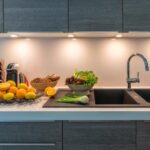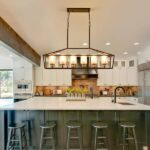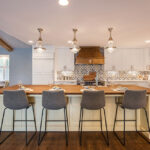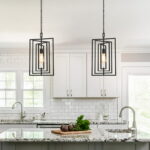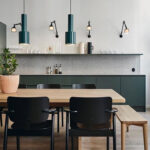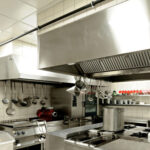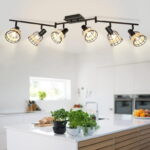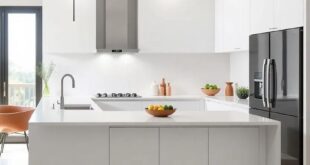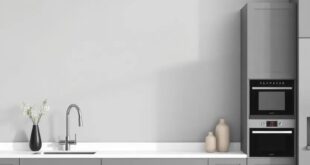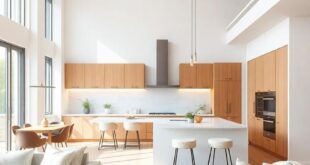The kitchen is often referred to as the heart of the home, and it’s no wonder why. It’s where meals are prepared, shared, and enjoyed, making it one of the most important rooms in a house. And just like any other room, lighting plays a crucial role in creating the right atmosphere and functionality.
Kitchen lighting is not just about illuminating the space, but also about creating a warm and welcoming ambiance. The right lighting can enhance the look and feel of the kitchen, making it a more inviting and comfortable place to be in. Whether you’re cooking a meal, enjoying a family dinner, or simply grabbing a snack, having the right lighting in your kitchen can make a world of difference.
There are three main types of kitchen lighting: ambient, task, and accent lighting. Ambient lighting provides overall illumination to the space, usually through ceiling-mounted fixtures like chandeliers or recessed lights. Task lighting, on the other hand, is focused on specific areas where tasks are carried out, such as under-cabinet lighting for food preparation. Finally, accent lighting is used to highlight specific features or elements in the kitchen, like pendant lights over a kitchen island or wall sconces to create a cozy atmosphere.
When planning the lighting for your kitchen, it’s important to consider the layout and design of the space. For example, if you have a large kitchen with an island, pendant lights can be a stylish and practical choice to provide task lighting for the island. If your kitchen has limited natural light, adding recessed lights or track lighting can brighten up the space and make it feel more open and inviting.
In addition to the type of lighting, the color temperature of the bulbs also plays a significant role in the overall look and feel of the kitchen. Warm white or soft white bulbs are ideal for creating a cozy and inviting atmosphere, while daylight or cool white bulbs are better suited for task lighting to help you see better while cooking or working in the kitchen.
In conclusion, kitchen lighting is an essential element in creating a functional and inviting space. By combining ambient, task, and accent lighting, you can achieve a well-lit and aesthetically pleasing kitchen that meets your needs and enhances your overall cooking and dining experience. So next time you’re planning a kitchen renovation or simply looking to upgrade your lighting fixtures, consider the impact that the right lighting can have on your kitchen’s ambiance and functionality.
 Decorationg Interior Design
Decorationg Interior Design



